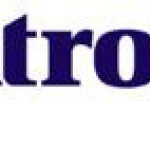- Industrie:
- Number of terms: 20560
- Number of blossaries: 0
- Company Profile:
Tektronix provides test and measurement instruments, solutions and services for the computer, semiconductor, military/aerospace, consumer electronics and education industries worldwide.
One million hertz (unit of frequency). A normal U.S.
television transmission channel is 6 MHz. The base bandwidth of the video signal in that channel is 4.2 MHz. The SMPTE HDEP system calls for 30 MHz each for red, green, and blue channels.
Industry:Software
A) Process used to reduce the amount of memory required to store an image. See JPEG, MPEG, and Decimation.
b) Application of an appropriate transfer function to the image signal so as to limit dynamic range. c) Application of bandwidth limiting or bit rate reduction to an image signal in order to bring it within the limitations of a lower capacity channel.
Industry:Software
In the scanning of a video image, the line number associated with the format is the total number of lines assigned to one frame. It is in fact a timing specification defining the conjunction with the field frequency the time interval allocated to each horizontal line (commonly measured in number of samples at the specified sampling rate or in microseconds). Some of these lines and intervals carry image information, some from the total assigned are dedicated to operational and control functions, including returning the scanning beam back to the upper left corner to begin the next field. Those allotted time intervals (lines) actually carrying image information or image-associated information such as captioning, image test signals, etc., are the active lines. In further reduction of time allocated to image information, some of each active line is dedicated to the horizontal interval to get the scanning beam to return to the leftedge starting point for the next line and to reaffirm colour subcarrier, etc. In the U.S. 525/59.94/2:1/NTSC system, about 7.6% of the total field or frame time is assigned to the vertical interval, and about 16% to the horizontal interval. Thus, the 525 television lines per frame provide about 480 active lines. Correspondingly, each active line displays image data about 84% of its time interval. Image information is thus conveyed for only about 76.4% of the total time. In digital encoding, it may be possible to reduce the number of bits assigned to the vertical and horizontal intervals and achieve significant bit rate reduction.
Industry:Software
A generic term for a mix/effects system that allows multiple video images to be combined into a composite image.
Industry:Software
The K Factor rating system maps linear distortions of 2T pulses and line bars onto subjectively determined scales of picture quality. The various distortions are weighted in terms of impairment to the picture.
The usual K Factor measurements are Kpulse/bar, K2T or Kpulse (2T pulse response), Kbar and sometimes K60Hz. The overall K Factor rating is the largest value obtained from all of these measurements. Special graticules can be used to obtain the K Factor number or it can be calculated from the appropriate formula. All types of linear distortions affect the K Factor rating.
Picture effects may include any of the short time, line time, field time, and long time picture distortions. Any signal containing the 2T pulse and an 18 μsec bar can be used to measure Kpulse/bar, K2T (Kpulse), or Kbar. A field rate square wave must be used to measure K60Hz. The FCC composite test signal contains these signal components. See the discussion on Pulse to Bar Ratios.
Industry:Software
Part of a computer system into which information can be inserted and held for future use. Storage and memory are interchangeable terms. Digital memories accept and hold binary numbers only. Common memory types are core, disk, tape, and semiconductors (which includes ROM and RAM).
Industry:Software
A) Techniques for increasing apparent sharpness without increasing actual resolution. This usually takes the form of increasing the brightness change at edges. Since image enhancement has advanced continuously for nearly 50 years, ordinary NTSC pictures sometimes look better than the NTSC pictures derived from an HDEP source, particularly when these derived pictures are designed to be augmented by other signals in an ATV receiver. It is very difficult to enhance pictures for NTSC receivers and then unenhance them for receivers with augmentation.
b) Once the camera response has been made flat to 400 lines (by aperture correction), an additional correction is applied to increase the depth of modulation in the range of 250 to 300 lines (in an NTSC system), both vertically and horizontally. This additional correction, known as image enhancement, produces a correction signal with symmetrical overshoots around transitions in the picture. Image enhancement must be used very sparingly, if natural appearance is to be maintained.
Industry:Software
In a scanning standard, the number of raster lines per frame that are not required to contain blanking. The active vertical lines may include signals containing non-image information.
Industry:Software
A somewhat ambiguous term that describes the ability to combine audio, video, and other information with graphics, control, storage, and other features of computer-based systems. Applications include presentation, editing, interactive learning, games, and conferencing. Current multimedia systems also use mass storage computer devices such as CD-ROM.
Industry:Software
A field-rate square wave is used to measure this parameter. Locate the centre of the field bar time, normalise the point to 100%, and measure the maximum amplitude deviation for each half. Ignore the first and last 2.5% (about 200 μsec). The largest of the two tilt measurements divided by two is the K60hz rating.
Industry:Software
